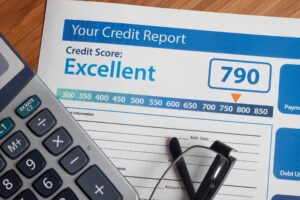**Title: Understanding APR vs. Interest Rate: Key Differences for Mortgage Loans**
**Introduction**
When shopping for a home loan, you might encounter the terms “APR” and “interest rate.” It’s easy to get confused and use them interchangeably, but they serve different functions. Understanding these differences is crucial before you get a mortgage. This article will help you learn how to calculate APR versus interest rate and how to compare lenders effectively.
**At A Glance: Mortgage Interest Rate Vs. APR**
Here’s a quick summary of the differences between interest rate and APR:
– **Interest Rate**: The percentage of your loan that youll pay back to a lender. This percentage is part of the cost of borrowing money.
– **APR (Annual Percentage Rate)**: Includes the interest rate along with other costs paid to acquire the loan. APR provides a more accurate snapshot of a loans true cost than the interest rate alone.
Both interest rate and APR are important to consider when evaluating loan offers. They are relevant to several loan types, including mortgage loans, home equity loans, and personal loans. However, APR isnt as relevant for credit card accounts and home equity lines of credit (HELOCs).
**What Is Interest Rate?**
Your interest rate is the percentage you pay to borrow money from a lender for a specific period or on a line of credit such as a credit card. Your mortgage interest rate might be fixed, meaning it stays the same throughout the life of the loan, or variable, meaning it will change periodically based on market rates.
Youll always see your interest rate expressed as a percentage. Youre responsible for paying back the initial loan amount you borrow (your principal) plus any interest that accumulates on your loan. The APR plus the initial loan amount and some closing costs that may not be included in the APR make up the total cost of a loan.
**How Interest Rates Work: An Example**
Suppose you borrow $100,000 to buy a home and have a fixed interest rate of 4%. That means youll annually pay interest that is 4% of your principal loan balance. At the start of your loan term, that would come out to $4,000 annually, or about $333.33 monthly. As you go further into your loan term and chip away at your principal balance through regular monthly payments, youll owe less in interest, and a larger portion of your payment will go toward your principal loan amount even though you still have an interest rate of 4%. This process is called mortgage amortization.
**What Is APR?**
APR stands for “annual percentage rate.” Your APR includes your interest rate as well as additional fees and expenses associated with taking out your loan. These fees and expenses include any prepaid interest, private mortgage insurance (with a conventional loan), some closing costs, mortgage points (also called discount points), and origination fees.
**What Is The Difference Between Interest Rate And APR?**
The main difference between a loans interest rate and APR is that the interest rate represents the cost youll pay each year to borrow money, while APR is a more extensive measure of the cost to borrow money and takes additional fees into account. Since APR includes your interest rate and other fees connected with your loan, your APR will reflect a higher number than your interest rate. You can also consider APR to be your effective rate of interest.
Thanks to the Truth in Lending Act (TILA), your lender must tell you both your interest rate and your APR. Youll see this information on your Loan Estimate (which youll typically receive around 3 days after filling out your mortgage application) and your Closing Disclosure (which youll receive at least 3 days before closing on your home).
Remember to consider both the interest rate and the APR when deciding on the best mortgage loan option for you.
**How Are Interest Rates Calculated?**
Your lender calculates your interest rate using your personal data. Every lender uses its own formula to determine how much youll pay in interest. Its therefore possible to get up to a total of 10 interest rates from 10 mortgage providers.
When calculating your rate, lenders also take into account factors such as current market interest rates and the overall state of the economy and real estate market.
**How To Get A Lower Interest Rate**
Lenders see you as riskier if you have a low credit score. You may have a history of missed payments, so a lender may compensate for the risk your score presents by offering you a higher interest rate. Theres more than one way to secure a lower interest rate from your mortgage lender. Anything you do to lower the risk for your lender will usually lower your rate. Lets explore a few ways to get a lower interest rate.
**Raise Your Credit Score**
The first action you can take toward lowering your interest rate is to raise your credit score, which is a three-digit number that provides lenders an at-a-glance summary of how you use credit. If you have a high credit score, it means you usually make payments on time and dont borrow more money than you can afford to pay back.
Here are some ways to raise your credit score:
– Always make your minimum loan and credit card payments on time.
– Limit the amount of money you put on credit cards.
– Pay down as much of your debt as possible.
– Avoid applying for new loans when youre preparing to get a mortgage.
**Get A Government-Backed Loan**
In many cases, you can also lower your interest rate by choosing a government-backed loan a VA loan, FHA loan, or USDA loan over a conventional loan, which isnt government-insured. If your home goes into foreclosure and you have a loan thats insured by the federal government, the government agency backing your loan will reimburse your lender.
Keep in mind that mortgage insurance can factor into your payment with both conventional loans and some government-backed loans, so its important to weigh all your options.
**How Is APR Calculated?**
Unfortunately, you have less control over your APR than your interest rate. Your lender controls the other factors that go into your APR, like origination costs and broker fees. Though there are some ways to lower your APR, such as avoiding private mortgage insurance by offering at least 20% down, the best way to secure a better rate is to compare lenders.
When using APR to look at rates, be sure to compare apples to apples as far as loan programs. In other words, dont compare the APR on a 30-year fixed-rate mortgage with one lender and a 5/1 adjustable rate mortgage (ARM) with another, since these dont represent an equal comparison.
**The Bottom Line On Interest Rate Vs. APR**
While your interest rate is the percentage of the principal balance that you pay on a loan, your APR includes not only your interest rate but also various other fees or expenses youll pay your lender. As a result, APR provides a more all-encompassing look at the cost of the loan. Some of the most common additional fees included in APR are brokerage fees, PMI, and discount points.
Understanding your APR and interest rate is crucial when taking out a mortgage for purchasing or refinancing a home. Are you ready to calculate your potential interest rate and APR for a home loan? Get started online today at [O1ne Mortgage Inc.](https://o1nemortgage.com) or call us at 888-372-8820 to speak with a mortgage expert.
**Keywords**: APR vs. Interest Rate, mortgage loan, home loan, mortgage interest rate, annual percentage rate, mortgage lender, O1ne Mortgage Inc., mortgage quote, apply for a loan, lower interest rate, credit score, government-backed loan, mortgage insurance, mortgage amortization, Truth in Lending Act, Loan Estimate, Closing Disclosure.
Real Estate Valuation
1. Home Appreciation 2. Real Estate Value 3. Home Improvements 4. Housing Market Trends 5. Property Value Calculation







